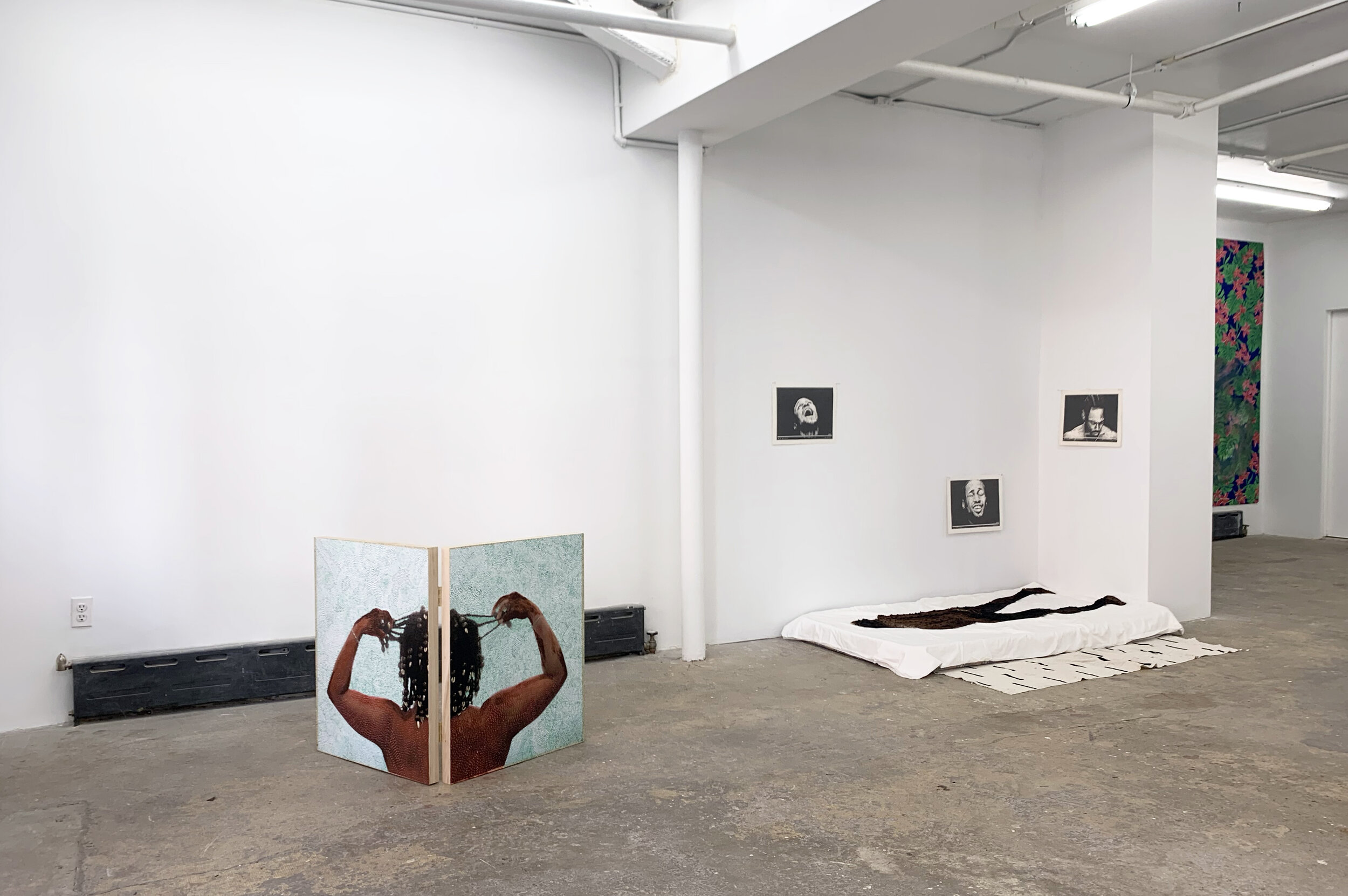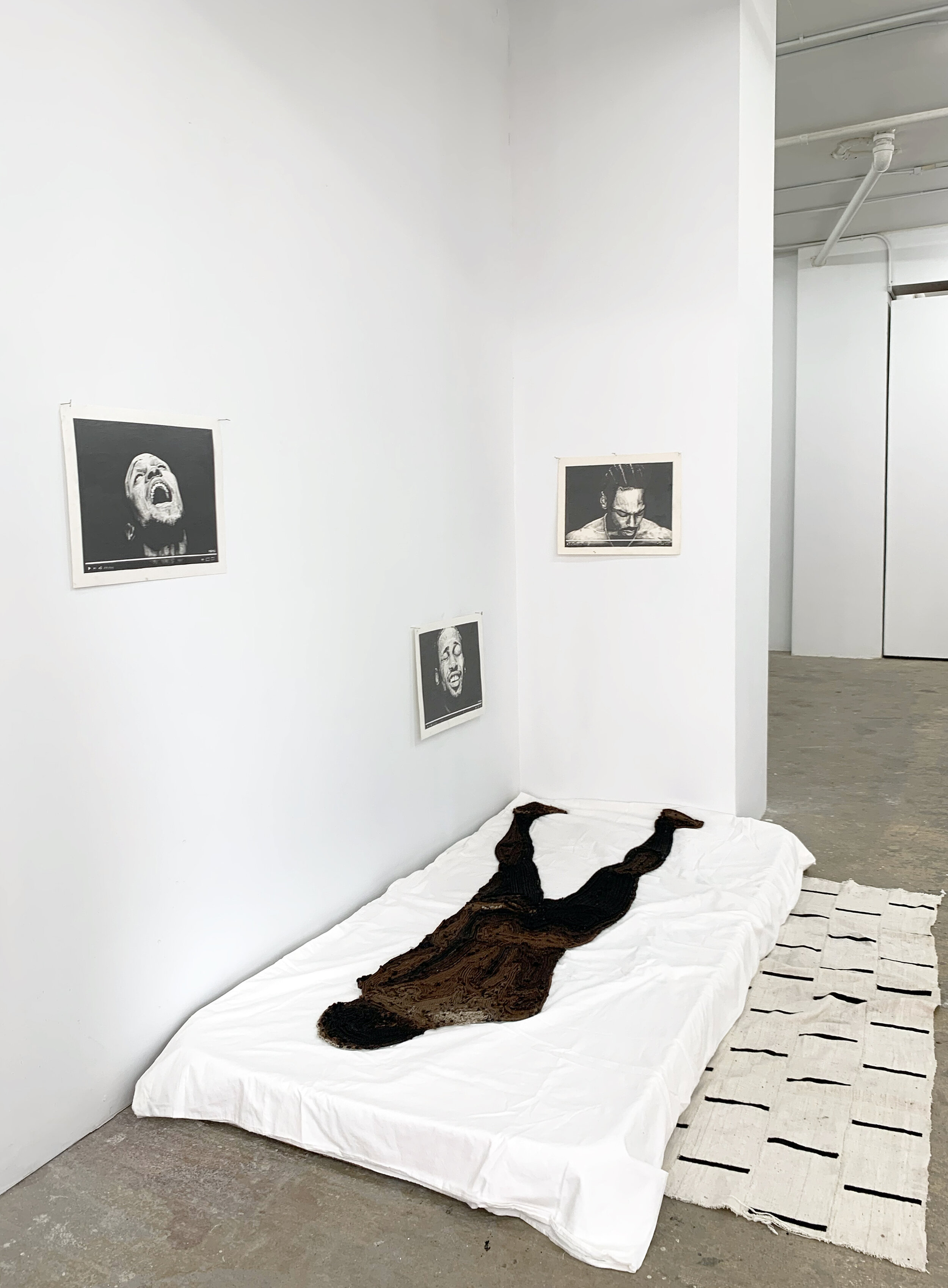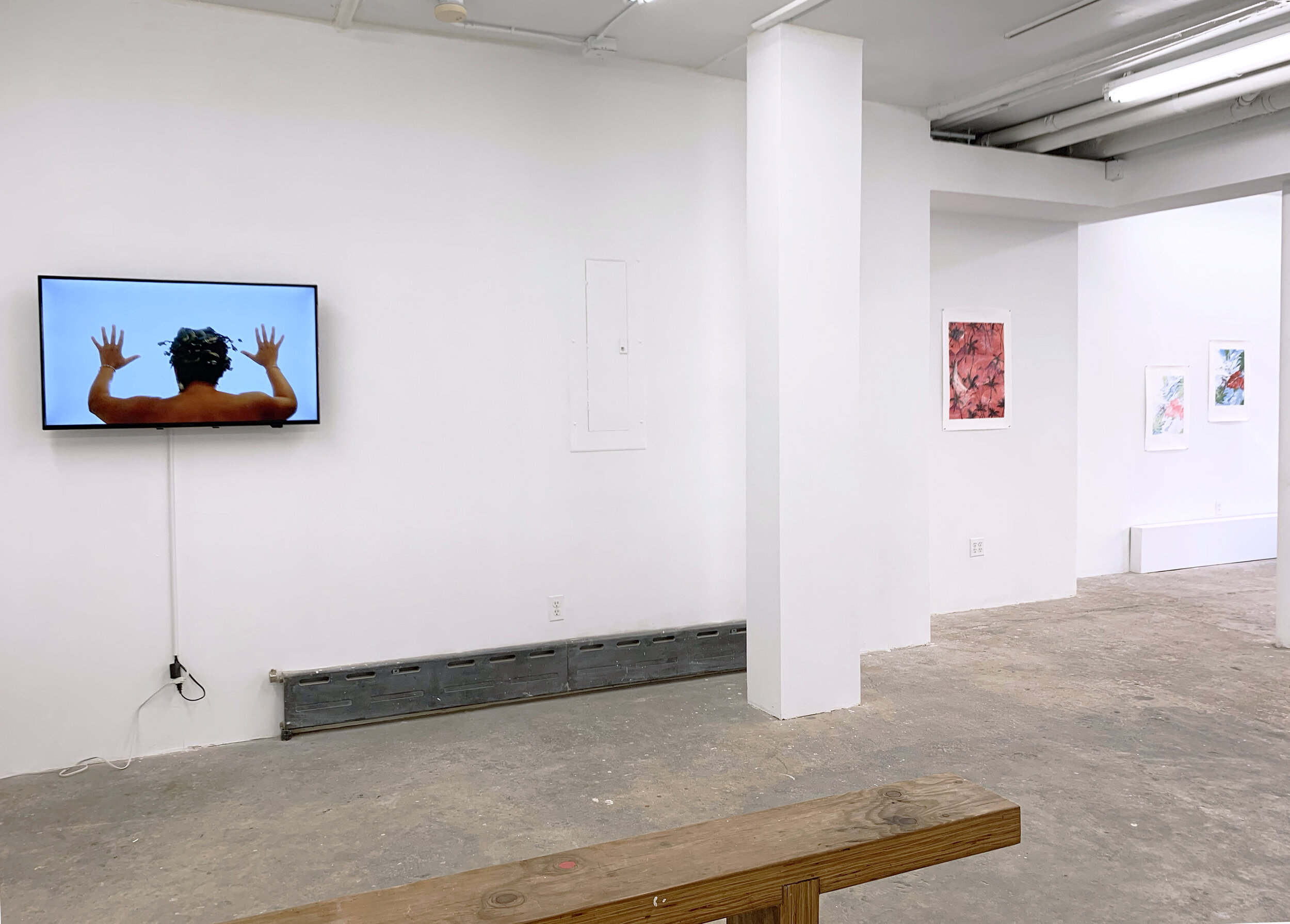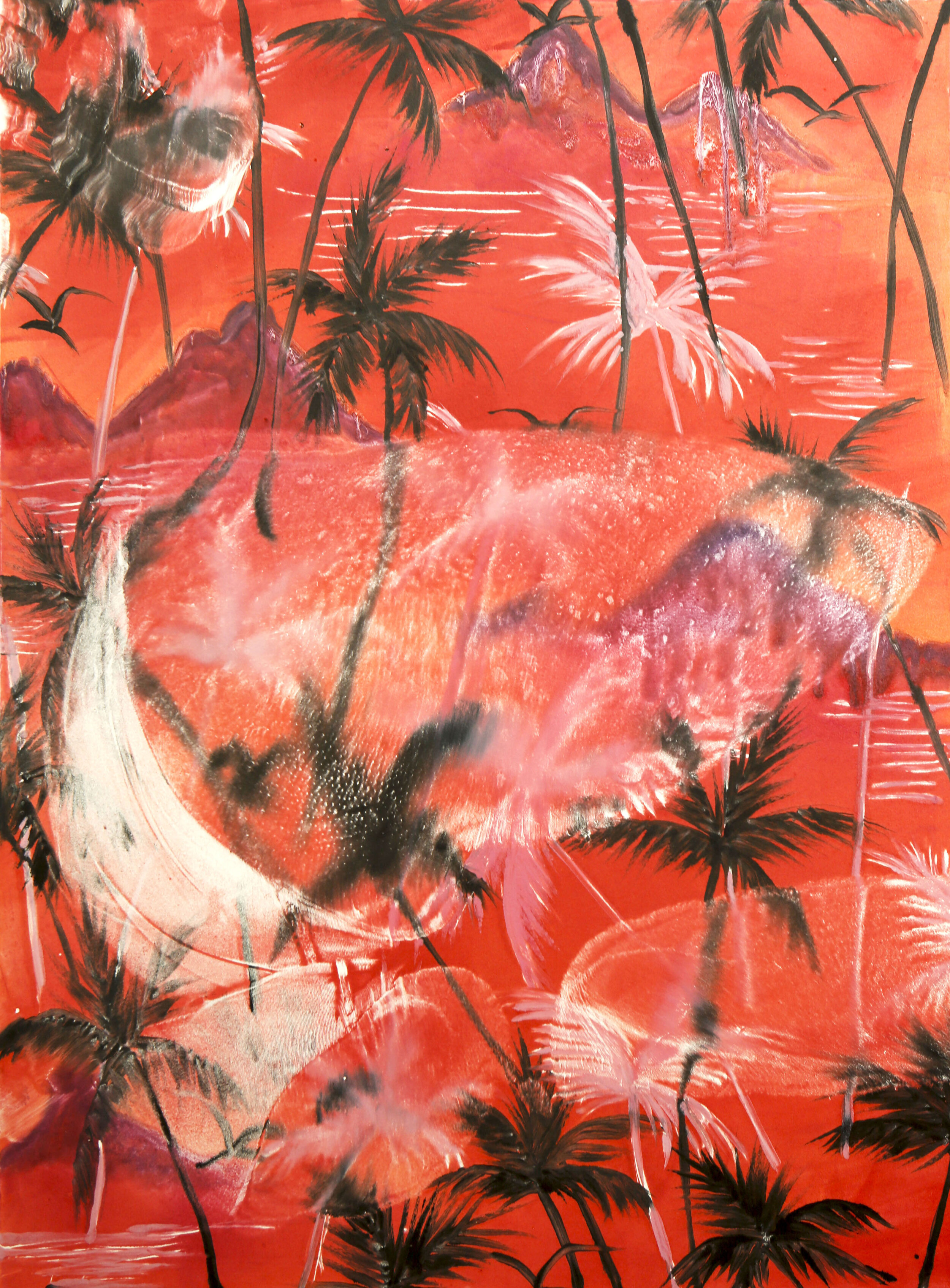I’m not really allowed to be mad
Crystal Z. Campbell, Joiri Minaya, Malcolm Peacock
October 20 – November 27, 2019
I ran into this girl I said I’m tired of explaining / Man this shit is draining /
But I’m not really allowed to be mad.
- Solange Knowles, “Mad” A Seat at the Table
Although relatively unexceptional, certain stories are neglected by what we know as history and public memory. Experiences as common as love and trauma, and involving feelings as universal as vulnerability, frustration, and ecstasy, a myriad of personal stories are distorted by and dismissed from the official narrative—one disguised under the face of the general consensus, but ultimately elaborated, preserved, and mechanically reproduced by the gatekeepers of power. The artists in I’m not really allowed to be mad turn this narrative onto itself, examining it and challenging it, while they share their own.
Crystal Z. Campbell turns to historical materials such as physical archives and online sources to create film, sound, and performance pieces. Drawn to ‘excavating public secrets,' and reflecting upon her African-American, Filipino, and Chinese descents, Campbell often addresses issues of migration, from the slave trade to present-day gentrification.
Working from the perspective of a Dominican-American woman, Joiri Minaya approaches representation as both a conceptual and material construction that can be dismantled. Often using her own body as a tool of resistance and in direct dialogue with the imagery of a packaged Tropical identity, she intends to sabotage its production, making transparent not only the labor, exploitation, and performance that go into it, but the wide range of symbols and resources consumed in its consumption.
Through his practice, Malcolm Peacock aims to expand the spaces and possibilities for a Black person to exist. Working primarily in installation, he generates conversations that address the lived experiences of Black people—from historical characters and pop figures to his friends, family, and self. These dialogues, both figurative and literal, organically steer in different directions, encompassing accounts of queerness and adolescence, as much as gun violence and icons.
The artists in this exhibition seek to shed light on the artificial nature of dividing what is political from what is private and reclaim their space in the narrative. Altogether, they draw attention to the obligation of exploring and recording first-person accounts, especially for those that are just beginning to discover these histories and are realizing how much there is to be angry about.





